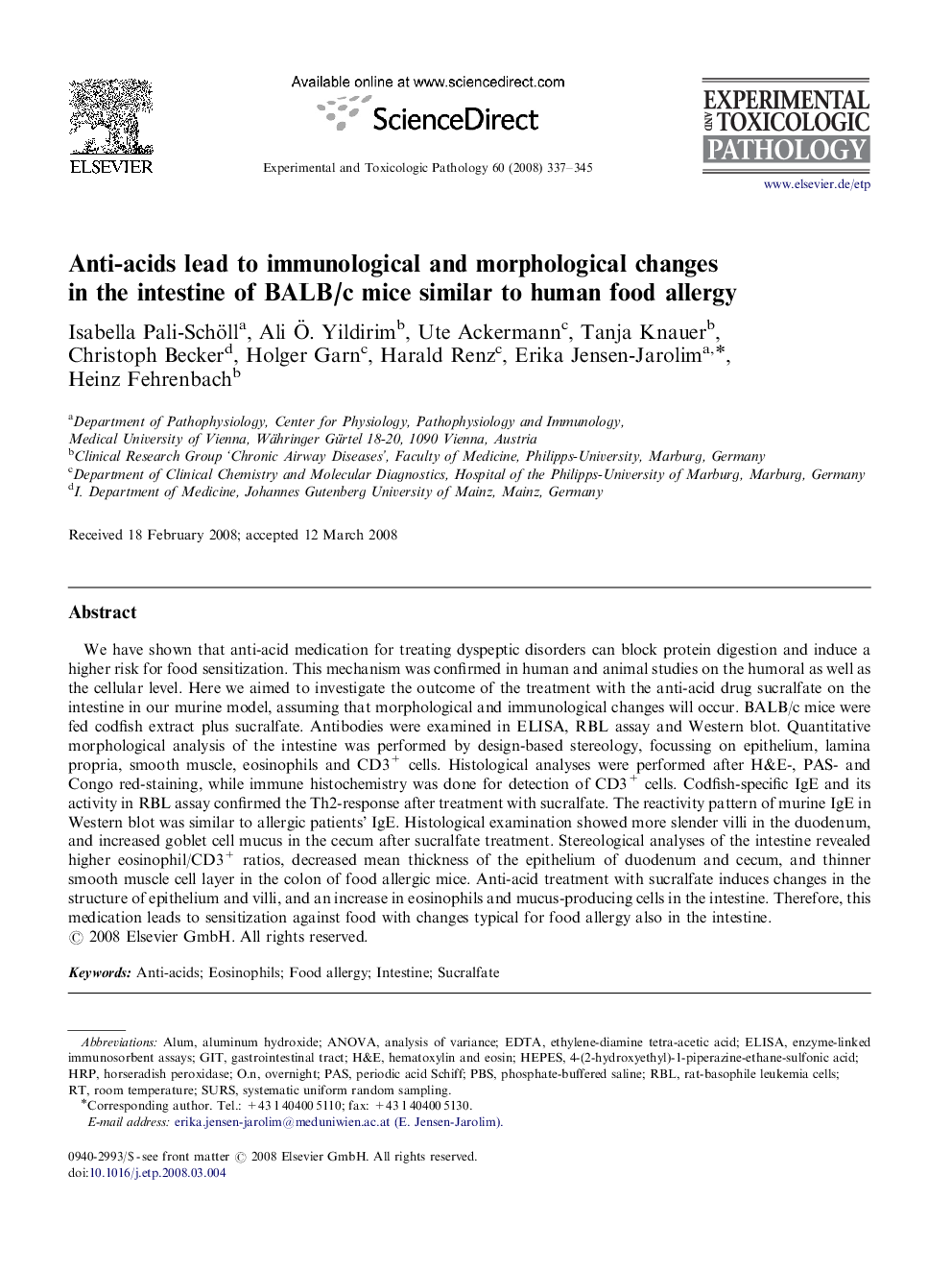| کد مقاله | کد نشریه | سال انتشار | مقاله انگلیسی | نسخه تمام متن |
|---|---|---|---|---|
| 2499858 | 1556845 | 2008 | 9 صفحه PDF | دانلود رایگان |

We have shown that anti-acid medication for treating dyspeptic disorders can block protein digestion and induce a higher risk for food sensitization. This mechanism was confirmed in human and animal studies on the humoral as well as the cellular level. Here we aimed to investigate the outcome of the treatment with the anti-acid drug sucralfate on the intestine in our murine model, assuming that morphological and immunological changes will occur. BALB/c mice were fed codfish extract plus sucralfate. Antibodies were examined in ELISA, RBL assay and Western blot. Quantitative morphological analysis of the intestine was performed by design-based stereology, focussing on epithelium, lamina propria, smooth muscle, eosinophils and CD3+ cells. Histological analyses were performed after H&E-, PAS- and Congo red-staining, while immune histochemistry was done for detection of CD3+ cells. Codfish-specific IgE and its activity in RBL assay confirmed the Th2-response after treatment with sucralfate. The reactivity pattern of murine IgE in Western blot was similar to allergic patients’ IgE. Histological examination showed more slender villi in the duodenum, and increased goblet cell mucus in the cecum after sucralfate treatment. Stereological analyses of the intestine revealed higher eosinophil/CD3+ ratios, decreased mean thickness of the epithelium of duodenum and cecum, and thinner smooth muscle cell layer in the colon of food allergic mice. Anti-acid treatment with sucralfate induces changes in the structure of epithelium and villi, and an increase in eosinophils and mucus-producing cells in the intestine. Therefore, this medication leads to sensitization against food with changes typical for food allergy also in the intestine.
Journal: Experimental and Toxicologic Pathology - Volume 60, Issues 4–5, 5 August 2008, Pages 337–345